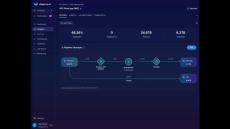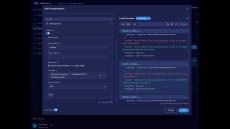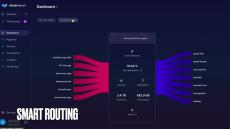|
By Mahendra Kumar
Role-Based Access Control (RBAC) is the backbone of secure system design, offering a structured method to manage user permissions and reduce the risks associated with overprivileged access. For large enterprise systems, RBAC is essential to ensure compliance, maintain operational integrity, and enable fine-grained access control across multiple teams and projects.
|
By Bryan Turriff
I have spent a 30-year career in marketing honing the art of storytelling. My career started in consulting, wound its way around to internet and software start-ups and had a 15-year stint at IBM in various roles before diving back into the world of start-ups again. That journey was made possible by telling stories about customers' challenges and how good life looks when our solutions solve them.
|
By David Young
Over my 20+ year career in enterprise technology, I've witnessed firsthand how powerful partner ecosystems can transform businesses. I've seen patterns repeat themselves time and time again: companies that build strong partner networks consistently outperform those that go it alone. Partners have been and always will be instrumental in scaling brand awareness, delivering exceptional customer value, and driving mutual growth.
|
By Steven Hua
After two decades leading marketing teams in enterprise software, particularly in IT and cybersecurity, you develop a sixth sense for transformative technologies. As I've watched security and observability data volumes compound at an alarming rate every 2-3 years, one thing has become crystal clear: enterprises are facing an unprecedented data crisis that demands an intelligent, autonomous solution.
|
By Edward Johns
Security data collection is the foundation of Splunk Enterprise Security (ES), but there are several challenges that organizations face when gathering and preparing data for effective analysis. These issues can impact the accuracy, efficiency, and value of the security insights derived from Splunk ES. These challenges can result in blind spots, inefficiencies, and inaccurate detection.
Today, we’re incredibly excited to share a major milestone in Observo AI's journey: we've raised $15 million in seed funding, led by two of the most respected venture capital firms in the tech world – Felicis and Lightspeed Venture Partners.
|
By Sourav Bose
It’s 3:17 AM. Your phone is buzzing with Slack notifications in the on-call channel. The API error rate has spiked to 60%. You crawl to your laptop, SSH into the prod cluster, and you’re buried under terabytes of logs. The noise is overwhelming.
|
By Bryan Turriff
Data fabrics are cohesive data layers that bridge data sources with data consumers, including analytics platforms such as SIEMs. They automate tasks like data ingestion, integration, and curation across diverse data sources, improving the agility and responsiveness of data ecosystems. More specifically, a security data fabric adds additional capabilities, including governance and compliance, security enrichment, and the integration of security events.
|
By Bryan Turriff
The massive growth of observability data isn’t limited to just log data. Metrics are growing just as fast, or faster. Making matters worse, DevOps and Engineering teams aren’t just dealing with the increasing volume of metrics data causing a spike in egress, storage, and compute costs. Many tools also charge by the number of custom metrics they track.
|
By Bryan Turriff
Observo AI is excited to announce that we have partnered with Microsoft and it is now available on the Azure Marketplace. This will make it easier for Azure customers to quickly adopt the AI-Powered Security and Observability Pipeline to help control costs, manage data sprawl, boost productivity, and identify and resolve critical incidents faster. Customers can now deploy Observo AI at speed while benefiting from Azure’s trusted and secure infrastructure, as well as its global commercial footprint.
|
By Observo.ai
Rinki Sethi, CISO of Bill, discusses how Observo Ai can quickly add value to control data sprawl so security teams can focus their time and efforts on Threat Hunting.
|
By Observo.ai
In this demo first shown at Splunk.conf24, we look at the data-lake creation feature of Observo. Data is stored in the parquet format - a open columnar format. We also support searching the data-lake based on natural language search - under the hood this functionality uses LLM for text to SQL functionality. Use the rehydrate function to send any subset of data to the analytics platform of choice, on-demand. Consider keeping a smaller Splunk index, and use the lake for retention - retain more data, longer, for a lot less cost, all in a flexible format.
|
By Observo.ai
In this demo from Splunk.conf24, we look at a super voluminous source of data like flow logs and see how Observo pipeline’s Smart Summarization Engine helps reduce complexity and makes it much easier to find the needle in a haystack.
|
By Observo.ai
In this demo first aired at Splunk.conf24, we showed the flexible enrichment capabilities of the Observo AI pipeline. A common enrichment scenario for security teams is GeoIP enrichment - it involves adding geographical information to IP addresses. Among other things, GeoIP enrichment can be very useful for location based customization, threat analysis & network traffic pattern mining. Let us see how we do it.
|
By Observo.ai
In this demo, first shown at our Splunk.conf24 breakout session, we look at how easy it is to enforce data policies including PII obfuscation using Observo AI’s Smart Pipeline. Our data plane is written in Rust and supports extremely high performance scanning of patterns at wire speed. Let us see how we do it.
|
By Observo.ai
We take a look at the main dashboard of Observo AI and delve into concepts like Sources, Destinations, pipelines, and transforms. (set your quality to HD using the setting button below for more detail)
|
By Observo.ai
In this Observo AI demo from Splunk.conf24, we show how easy it is to drag and drop to create a pipeline from scratch and then we show how to transform data from Windows logs and XML into the Splunk CIM for easy ingestion to Splunk.
|
By Observo.ai
Observo sentiment analysis recognizes patterns of normal data and anomalies that need more investigation using our machine learning models. Alert fatigue happens when your teams are inundated with alerts that may have little to no important information in them. By using sentiment analysis, they can prioritize the alerts that need attention right away and which can be looked at later - resolve critical incidents faster before they spiral into a bigger problem. Our customers have reported 40% or more boost in incident resolution speeds.
|
By Observo.ai
Visit us at observo.ai.
|
By Observo.ai
In our comprehensive whitepaper, we delve into the challenges of observability, including data overload, legacy architectures, rising costs, security risks, noisy data, and lack of dedicated resources.
- February 2025 (5)
- January 2025 (2)
- October 2024 (2)
- September 2024 (2)
- August 2024 (1)
- July 2024 (2)
- June 2024 (9)
- May 2024 (3)
- April 2024 (3)
- March 2024 (2)
- February 2024 (4)
- January 2024 (4)
- November 2023 (4)
- October 2023 (1)
- September 2023 (1)
- February 2023 (1)
Observo.ai helps you reduce security and observability costs by 50% or more while resolving incidents 40% faster.
With artificial intelligence, Observo.ai elevates observability beyond static, rules-based tools. We automate observability pipelines, for smarter, deeper data optimization, faster deployment, and bigger savings.
AI-driven features to optimize telemetry data for Security and DevOps:
- Data Optimization & Reduction: Cut log volume by 80% and reduce the total cost of observability by 50% or more.
- Anomaly Detection: Lower Mean Time to Resolution (MTTR) of incidents by 40% or more.
- Smart Routing: Avoid vendor lock-in by routing data where it has the most value.
- Searchable, Low-Cost Data Lake: Retain more data, spend less money, be more flexible.
- Data Enrichment: Add context to data for faster searches and eliminate Alert Fatigue.
- Sensitive Data Discovery: Earn your customers’ trust by securing all PII to stay in compliance.
The AI-Powered Observability Pipeline.


















